Verdict
The Oppo Reno 10 hits all of the marks for an acceptable mid-range smartphone experience. Its display, performance, stamina, design, and camera all fall somewhere between ‘good’ and ‘good enough’. Other than its rapid charging and a dedicated telephoto camera, however, it doesn’t really stand out in a particularly competitive field.
Pros
- Strong stamina
- Rare mid-ranger with a telephoto
- Rapid 67W charger bundled in
Cons
- Busy, buggy software
- Not the fastest phone in its class
- Main camera not the best
- A full charge in under 45 minutesDespite a large 5000mAh battery, the 67W charging provides a full charge in just 44 minutes.
- Stylish designThe Oppo Reno 10 5G is a good-looking mid-ranger compared to simpler options from the likes of Samsung and Google
- Dedicated telephoto cameraA telephoto lens in a mid-ranger is a rare thing, allowing you to get closer to your subject without the need for digital zoom.
Introduction
With a price tag of £399, a classy design and a well-rounded camera, the Oppo Reno 10 joins an emerging class of compelling mid-rangers.
Google’s imperious Pixel 7a and the Samsung Galaxy A54 5G are perhaps the most high-profile members of this club, and the Honor 90 has also joined of late.
It should surprise no one to learn that the Reno 10 is a good phone. Oppo has been doing this for a while now, and doesn’t tend to make many glaring mistakes. What we really need to establish is whether the Reno 10 has that mid-range X-factor that lifts it above all the credible also-rans.
With such strong mid-range competition, the Oppo Reno 10 is going to have to go some if it’s to really stand out. While reasonably rapid charging and an unusual portrait telephoto camera certainly give the phone a couple of unique weapons, it’s somewhat doubtful whether they’re the kind of decisive difference makers that can win the day.
Design
- Curvy, sleek glass and plastic design
- Sparkly Oppo Glow finish
- Only IPX4 rated
Oppo has crafted a handsome, if somewhat by-the-book phone in the Reno 10. It’s got a similar curved-edge design to the Honor 90, with a 93% screen-to-body ratio. It’s an approach that somehow still screams “flagship” even as the flat-edged look has grown more prominent.
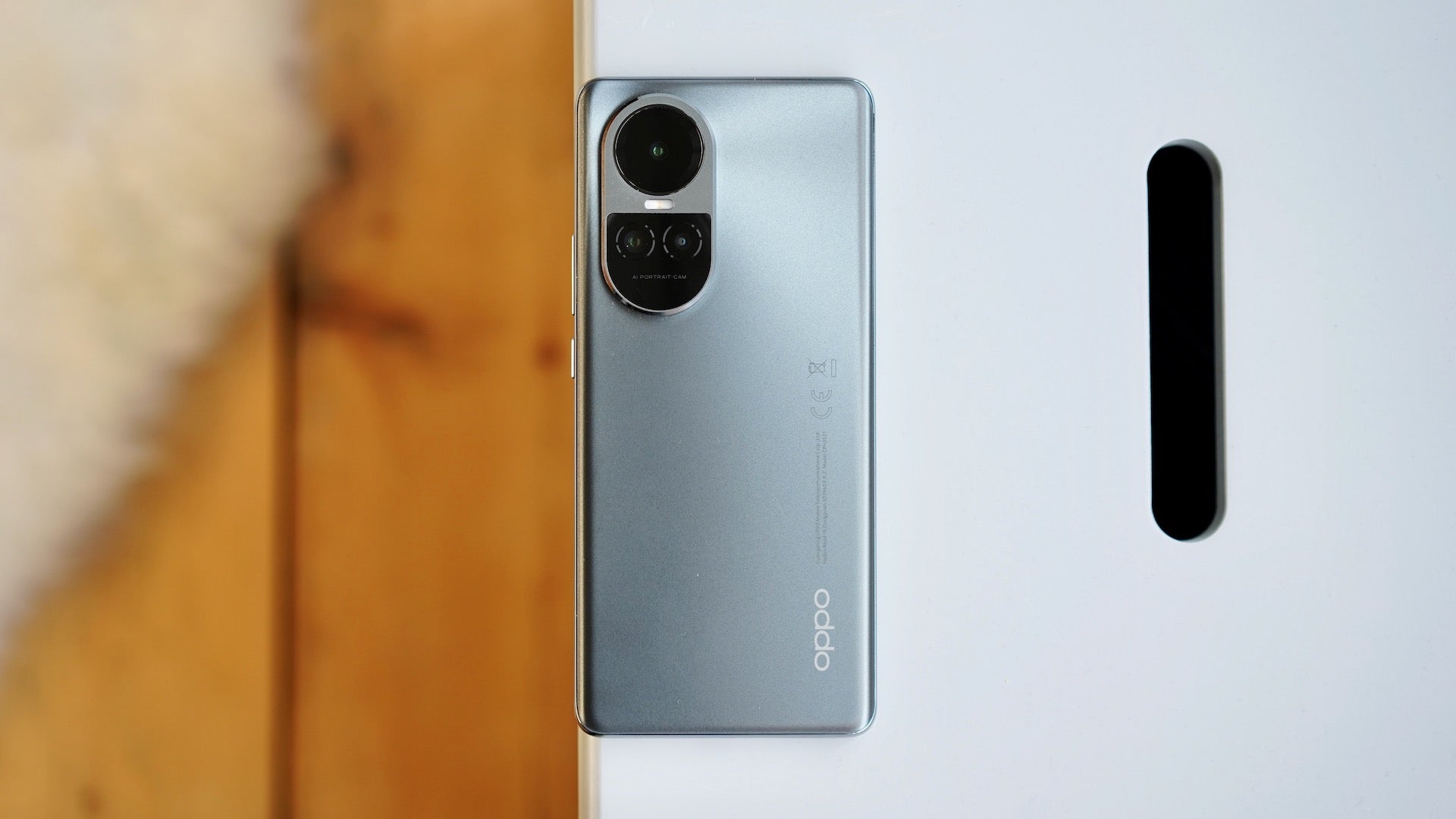
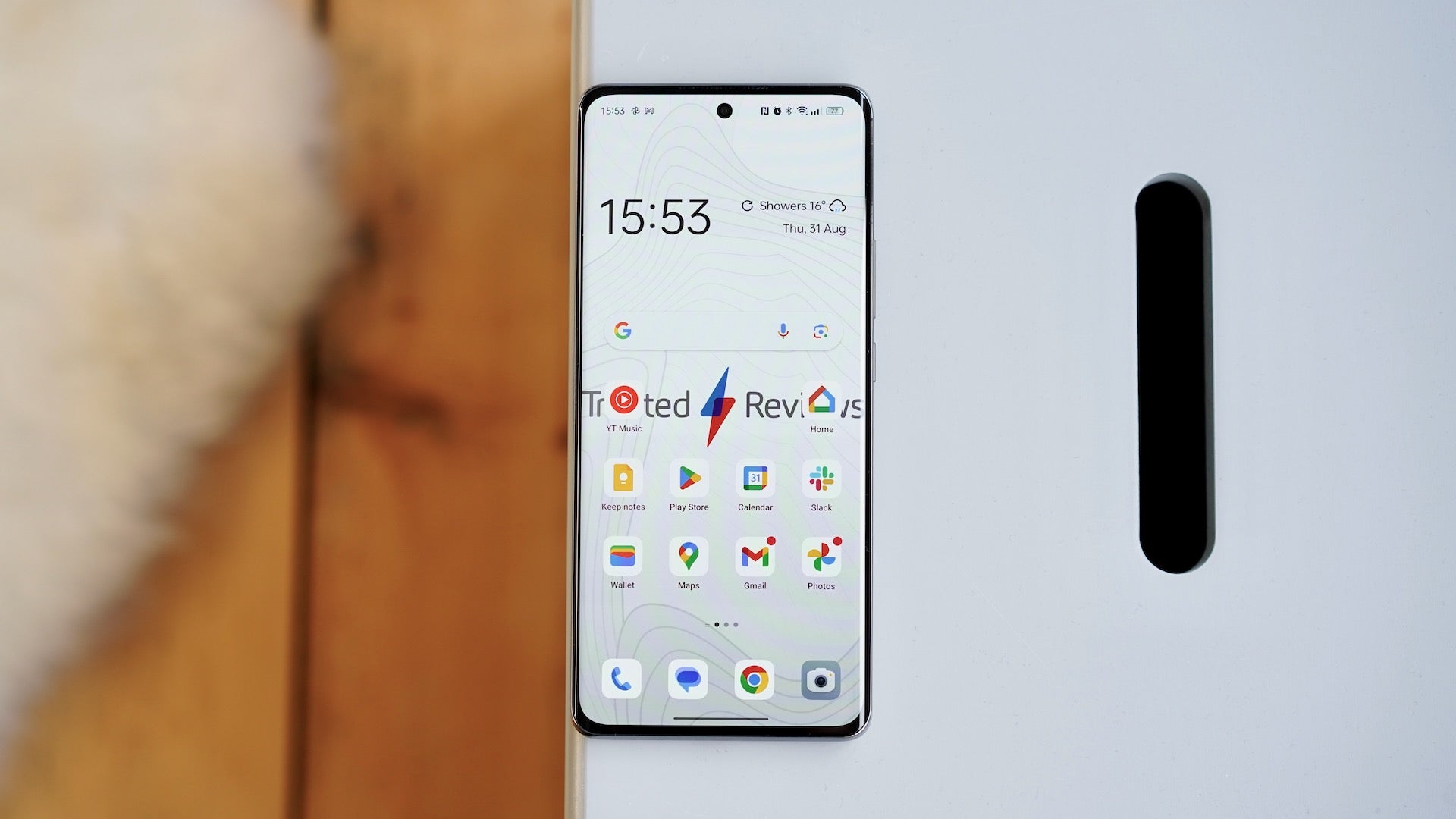
Unlike the Honor 90, however, there’s a much more premium-feeling glass rear panel here. It’s got a twinkly Oppo Glow finish that not only glistens in the light – even in this dark “silvery grey” finish – but also apparently wards off scratches. I can’t entirely speak to that, but I can attest to the fact that my test unit looks as fresh today as it did the moment I first prised it out of its box, aided by the fact that it seems to resist fingerprints far better than most.
This a reasonably compact phone, with dimensions of 162.4 x 74.2 x 8mm and a just-so weight of 185g. The latter is helped by the use of a plastic frame, which is pretty common in this area of the market. Yes, there’s a slight disconnect between the shiny faux-metallic finish of this material and its soft, warm-to-the-touch nature, but it’s a smart compromise.
Talking of compromise, you’ll need to be willing to accept a mere IPX4 dust and water resistance rating. You might not feel this warrants mentioning in a £400 phone, but both the Pixel 7a and the Galaxy A54 5G offer a near-flagship IP67 rating for similar money.
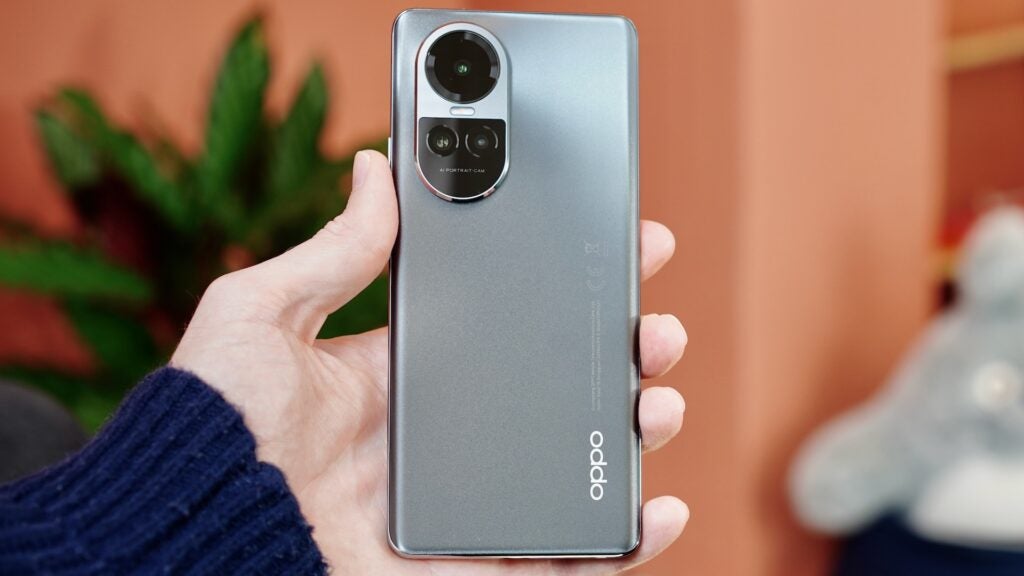

It’s good to see that stereo speakers have made the cut, though. They’re a little on the reedy side, lacking in depth and bass, and I found that I had to crank the volume up a little higher than I usually would during video playback, but they’re clear enough.
Another neat (if inessential) addition is an IR blaster on the top edge. Xiaomi often includes these in its phones, but it’s nice to see another manufacturer enabling you to take control of your TV or Hi-Fi using the bundled IR Remote app. I’m sure many people would happily swap this for a 3.5mm headphone jack, though.
Screen
- 6.7-inch FHD+ OLED display
- 120Hz refresh rate
- 950nits peak brightness
The Oppo Reno 10 features a decent 6.7-inch OLED display with a 1080 x 2412 (FHD+) resolution and a 120Hz peak refresh rate. Those specs alone mean that it outguns the Pixel 7a and the Galaxy A54 5G screens straight out of the gate, though it falls well short of the majestic Honor 90 display. But then, so do a lot of flagship phones.
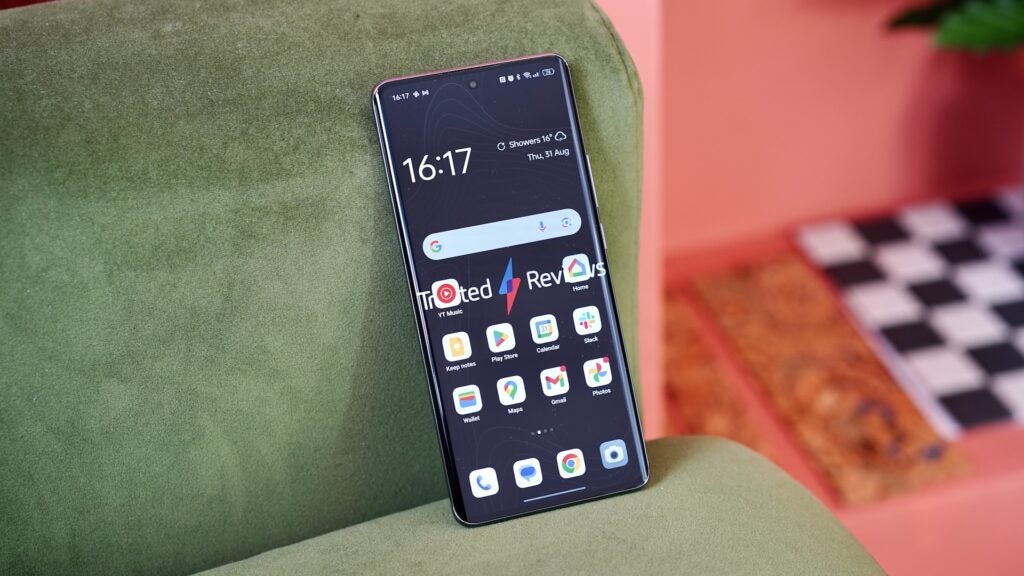

Colour accuracy is decent here, if not top grade, and there’s HDR10+ certification. It’s not the brightest display around, however, with a claimed top brightness of 500 nits in typical conditions (I measured it at 485 nits with auto-brightness off) and a claimed peak of 950 nits in HDR conditions.
I found that streaming HDR-tuned movie content on anything around half-brightness or less proved to be somewhat dim, even indoors. You’ll need to keep that slider cranked way up for any serious film-watching.
All of this is good rather than spectacular within the mid-range market, and it’s worth repeating that the Honor 90 display is a level or two above everything else in its class if that’s your priority. In general, though, the Oppo Reno 10 display offers a strong viewing experience.
Camera
- 64MP main camera
- Unusual 32MP 2x telephoto portrait camera
- 8MP ultrawide
We’re used to mid-range phone makers prioritising a single camera sensor in a bid to hit a particular price point. It’s just that we’re used to that sensor being the main one, rather than the telephoto. Indeed, it’s pretty rare to find a £400 phone with a dedicated 2x telephoto camera like the Oppo Reno 10 has.
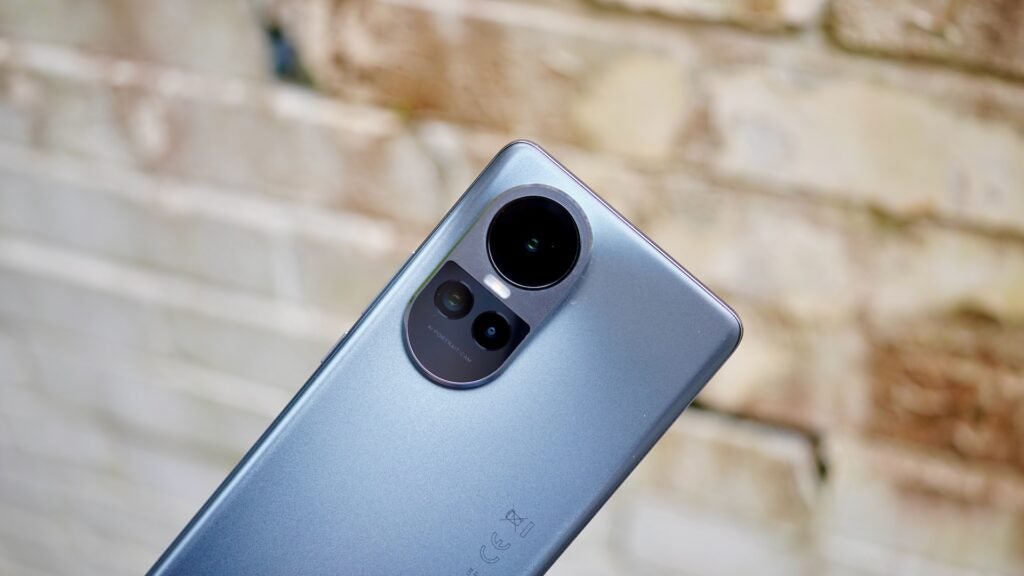

Interestingly, Oppo calls it a “telephoto portrait” camera, which is a hint as to what it envisages you doing with it. This isn’t so much meant for zooming in on distant objects – though you can certainly do that – but rather for getting those clean close-ups of friends and family without getting up in their faces.
Let’s start by talking about that main sensor, though. This is a 64MP 1/2-inch sensor, which isn’t particularly big or impressive for a modern £400 phone – certainly not compared to the Pixel 7a, the Galaxy A54, or the Honor 90. It’s the same sensor that you’ll find running the Poco F5 and Poco F5 Pro, albeit without OIS backup, which is hardly a ringing endorsement.
It’s not a bad performer by any means, capturing nicely balanced shots with decent contrast and acceptable dynamic range. Oppo’s algorithms work hard to brighten dull scenes, as was evident whilst shooting the same scene with the Sony Xperia 10 V, which is a phone that relies on a more ‘as seen’ approach. However, the Reno 10’s main camera doesn’t get close to the sharp pop of the Pixel 7a, even if the Reno 10’s close-up autofocus choices proved a little less eccentric.
I was also pleasantly surprised when shooting using the Night mode on a London skyline. Admittedly, I wasn’t expecting much given the Reno 10’s small sensor size and lack of OIS, and these low-light shots certainly have a certain softness and smoothness to them, but they’re clean enough to capture a sufficiently static night scene. They don’t have the startling sharpness or clarity of its mid-range rivals, but they’re fine.
Back to that 2x telephoto, which uses the Sony IMX709 sensor. As a classic 2x zoom camera, it does a serviceable job at getting you closer to the action, as long as you don’t zoom beyond 2x. At this natural range it’ll give you reasonable zoomed-in shots, and will probably do a better job than cropping in on that small main sensor would have done. There’s a drop-off in sharpness and dynamic range compared to 1x snaps, and they don’t quite have that same pronounced contrast, but again, this goes above and beyond for a mid-ranger.


That’s not what this camera is exclusively meant for though. Oppo says the tech is designed for users to shoot ultra-clear portraits with a 47mm portrait focal length, and on that front it’s a winner. Subjects (both human and otherwise) look nice and sharp, and really pop against the background. You can adjust between an f/1.4 and an f/16 effect, highlighting the artificial nature of the bokeh effect, but it still looks good.
You also get the option of portrait shots using the main 1x camera, with the 2x sensor presumably providing depth information. In my sample images, you can see the difference between using the 2x from a distance and stepping in closer with the 1x. It’s nice to have some genuine framing options outside of the flagship category.


The 8MP ultra-wide is comfortably the weakest component here, providing dimmer, murkier wide shots with blown-out highlights. In a head-to-head with the Pixel 7a’s equivalent sensor, it’s not even close, though it’s far from a total write-off.
There’s a 32MP fixed-focus selfie camera around front, and it’ll do an OK job in balanced lighting conditions. It somewhat struggles with blowing out highlights, but that’s not uncommon at this price.
Performance
- MediaTek Dimensity 7050
- 8GB RAM
- Stays cool under load
Oppo’s latest mid-range runs on a decidedly mid-range MediaTek Dimensity 7050 processor. If you’re unfamiliar with that name, it’s basically a rebranded Dimensity 1080, which is the chip that powers the Xiaomi Redmi Note 12 Pro – an older, cheaper phone than the Reno 10.
It falls a little short of the Pixel 7a, the Galaxy A54 5G, and the Honor 90 in CPU benchmarks, while the gap widens further when it comes to GPU performance. The Pixel 7a in particular is streets ahead in terms of graphical output, thanks to its flagship-tier Tensor G2 chip, but the Honor 90 also wins comfortably with its superior mid-tier Snapdragon 7 Gen 1 processor.
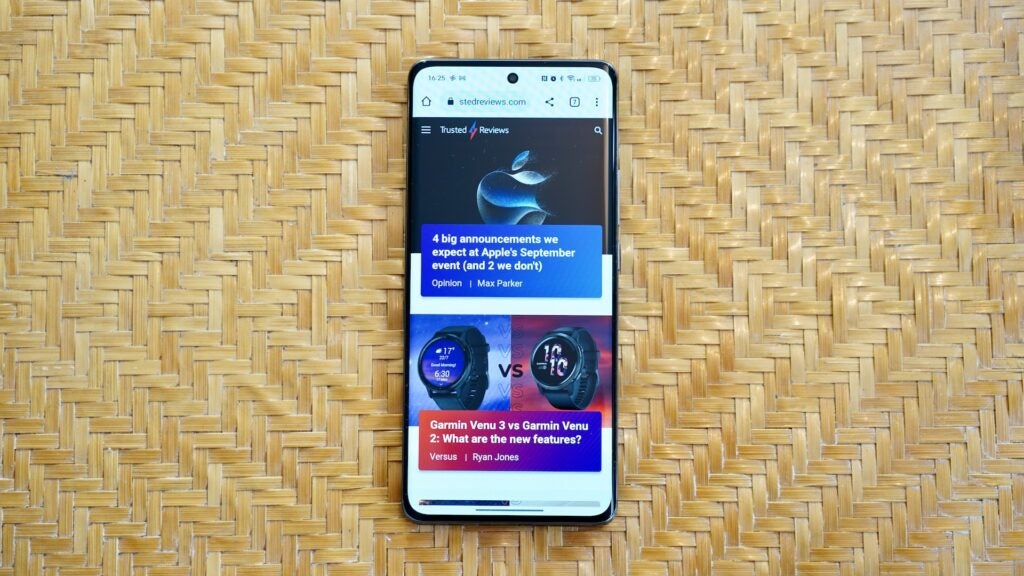

While it won’t be winning any foot races against its contemporaries, however, I had few complaints about the Oppo Reno 10’s performance from an everyday usage point of view. It unlocks quickly (via a reliable in-display fingerprint sensor), and drives its 120Hz display fluidly in general navigation.
App startup time isn’t the snappiest, but that’s something you’re only likely to notice if you’re coming from a more expensive phone (or the Pixel 7a), which most people won’t be. App switching is both brisk and reliable, doubtless aided by a generous 8GB RAM provision.
One thing I will say for the Oppo Reno 10 is that it remains remarkably cool and composed under load. It doesn’t heat up under strain, such as when gaming or running intensive GPU benchmarks, and its performance level remains consistent over time. It’s the tortoise rather than the hare in that famous scenario, which might sound like I’m damning it with faint praise, but it’s praise nonetheless.
Software
- Android 13 with ColorOS 13.1
- Lots of bloatware
- Some lock screen/notification bugs
The Oppo Reno 10 runs on Android 13, as you might expect, but it’s the company’s bespoke ColorOS 13.1 UI that you’ll be interacting directly with.
This custom interface hasn’t always been a favourite among TR staff, and it’s certainly not mine. While it’s sufficiently responsive, there’s a slight disconnect with some fairly ordinary tasks.
Annoying little bugs like WhatsApp notifications not showing up until you unlock the phone and jump into the app, and the YouTube Music widget not always showing up on the lock screen, left me pining for the cleaner and more reliable UIs of Google, Sony, and Motorola.
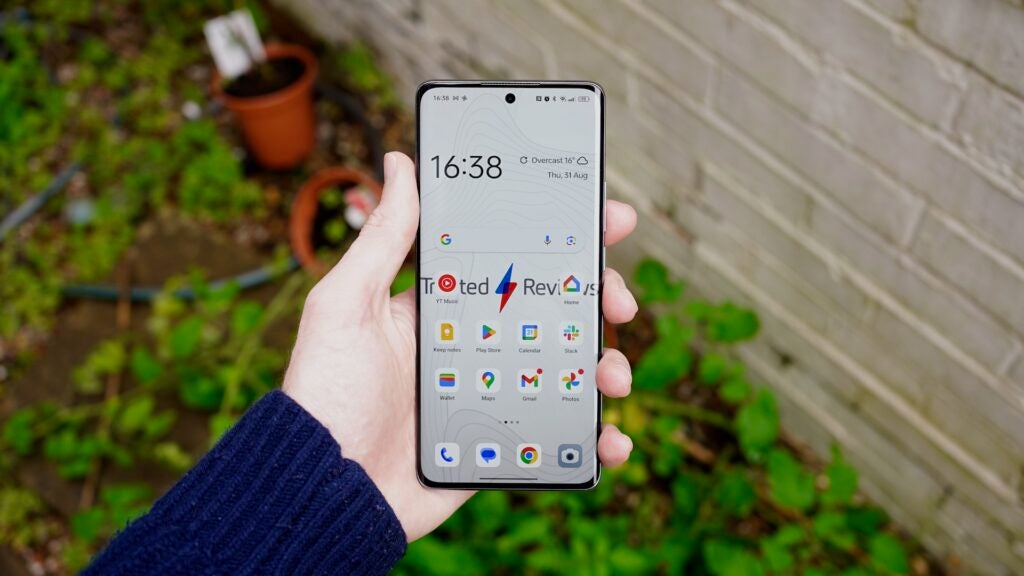

Talking of WhatsApp, I encountered a couple of instances of notifications taking a while to come through. Of course, I can’t discount the possibility that this was a problem with my network or indeed the WhatsApp servers rather than the Reno 10 or Oppo’s software, but I didn’t experience any such delays with any other phones around this time.
Then there’s the largely superfluous Shelf, which assembles a bunch of square widgets and a universal search function onto a single screen. It feels almost entirely pointless, but at least Oppo hasn’t forced it into your life. Other manufacturers would have replaced Google Feed with such a feature, but Oppo makes it optional – which of course makes it feel even more inessential.
There are potentially stacks of bloatware here, especially if you’re inattentive at the set-up phase. Here the list of optional installs stretches over two pages, and is comprised largely of throw-away games.
Even if you untick all those boxes, you’ll still have to put up with a fair amount of needless clutter on your home screen. There’s a secondary web browser, which never ceases to baffle me, as well as a secondary app store and a separate Theme Store.
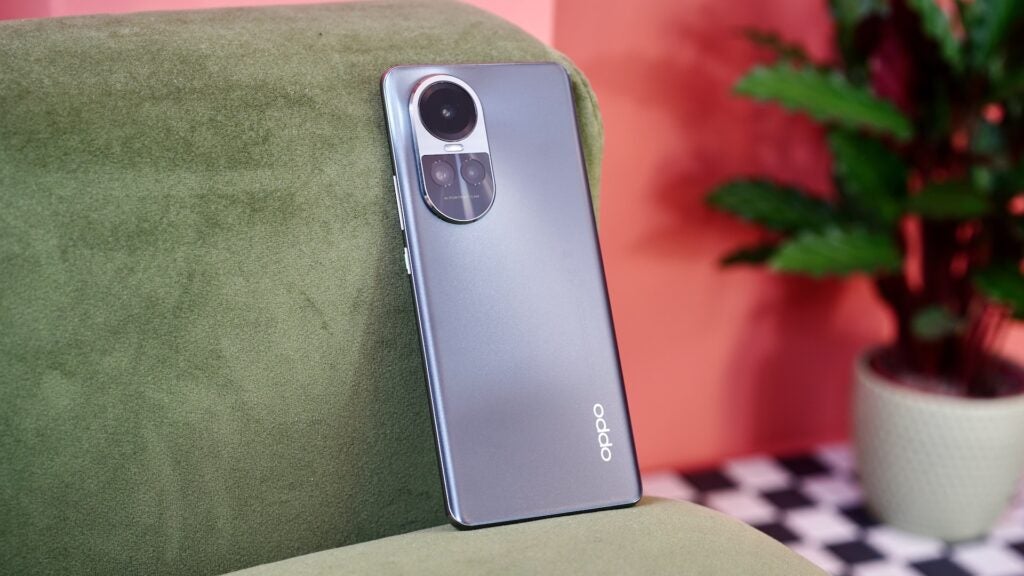

Other, non-negotiable third-party pre-installations include Netflix, Facebook, Amazon Shopping, Spotify, TikTok, Booking.com, and LinkedIn. Not all are wholly without use, of course, but having a stack of apps forced upon you always grates a little.
On the plus side, it’s nice to find Google’s Keep and Calendar apps installed from the get-go. They don’t always make the cut in such heavily-tinkered-with custom Android UIs.
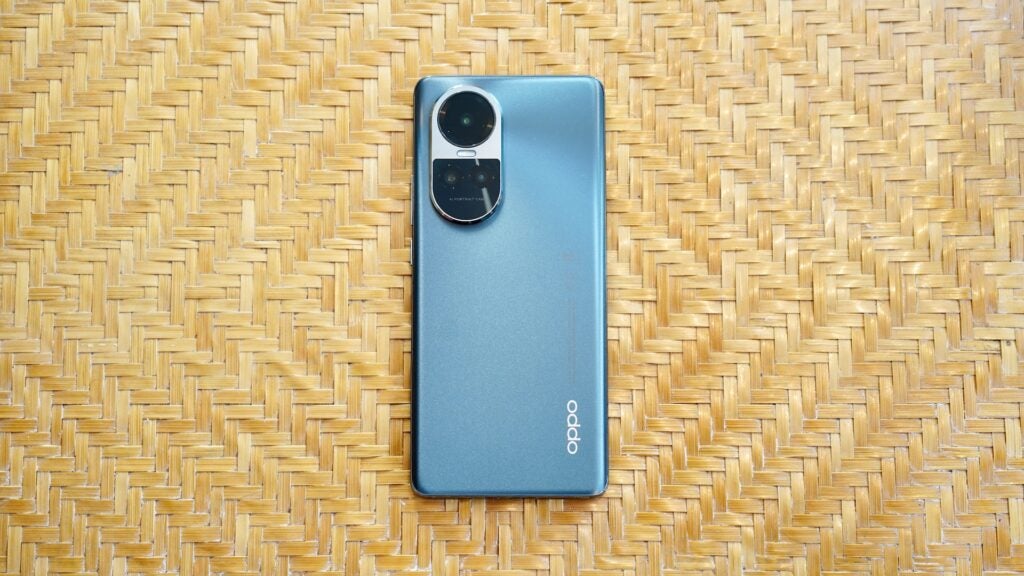

Battery life
- 5000mAh battery
- 67W charger bundled in
- Should get you through a heavy day
Oppo has packed the Reno 10 with a 5,000mAh battery, which matches the Galaxy A54 and Honor 90 for capacity.
It produces solid stamina that will get you through a day of moderate to heavy usage without too much worry. I found this to be somewhat variable, but on a day with 4 hours 40 minutes of screen on time – which is firmly in ‘heavy usage’ territory – I was left with 31%. A day of more moderate usage (3 hours of screen on time) left me with around half a tankful.
In slightly more scientific terms, an hour of Disney+ HDR streaming with the screen brightness set to around half sapped 5% of a charge, as did 30 minutes of light gaming on Vampire Survivors. That’s pretty strong.
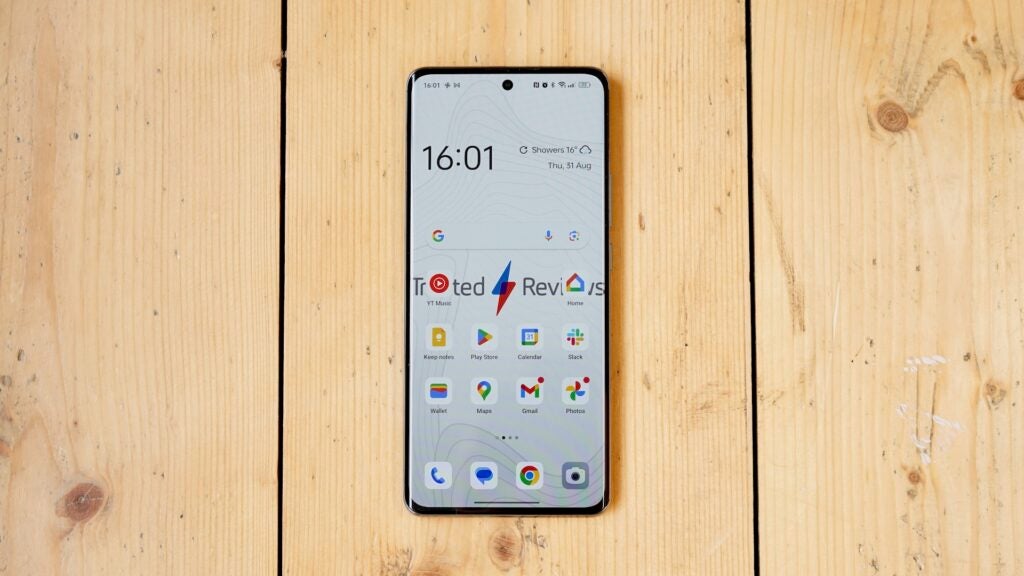

I should note that for all these tests, I switched the display to a forced 120Hz early on in my time with the phone and never switched it back to the default Auto-select mode. You could conceivably conserve even more power if you left this setting well alone.
You also get the benefits of rapid 67W wired charging here, which will get you from empty to full in 44 minutes. What’s more, you actually get said charger in the box, unlike the Pixel 7a, Galaxy A54, and Honor 90. That’s two plus points in Oppo’s column.
Unlike the Pixel 7a, you don’t get any wireless charging support, though that’s still far from a common provision for around the £400 mark.
Latest deals
Should you buy it?
You’re a portrait obsessive: No other mid-range phone pays as much attention to portrait shots as the Reno 10, with its dedicated 2x telephoto offering a uniquely honed-in perspective on human (and non-human) subjects.
You like clean software: Oppo’s custom UI is busy and full of bloatware. You’ll need to turn to Google, Sony, or Motorola if you want something cleaner.
Final Thoughts
Oppo knows how to put together a good phone, and the Reno 10 is just that. From its quietly stylish design to its solid display and a flexible camera provision, it ticks a lot of boxes.
This is a phone that runs cool under load, and it will stand up to media usage without sapping too much power. I also appreciate the provision of a rapid 67W charger in the box, which isn’t the sort of thing you can take for granted any more.
At no point, however, does the Oppo Reno 10 threaten to force its way to the front of the pack. Its main camera, performance, and software fall well short of Pixel 7a standards, and while its screen is decent, it can’t touch the Honor 90’s.
All of which leaves you with an accomplished mid-range all-rounder that probably won’t be anyone’s first pick. It’s the very definition of a worthwhile alternative.
How we test
We test every mobile phone we review thoroughly. We use industry-standard tests to compare features properly and we use the phone as our main device over the review period. We’ll always tell you what we find and we never, ever, accept money to review a product.
Find out more about how we test in our ethics policy.
Used as a main phone for the review period
Thorough camera testing in a variety of conditions
Tested and benchmarked using respected industry tests and real-world data
FAQs
Good enough for a full day of intensive use.
No.
6.7 inches.
Trusted Reviews test data
Jargon buster
mAh
An abbreviation for milliampere-hour and a way to express the capacity of batteries, especially smaller ones in phones. In most cases the higher the mAh, the longer the battery will last but this isn’t always the case.
IP rating
An abbreviation for ‘Ingress Protection Code’, which lets you know to what extent a device might be waterproof or dustproof.
OLED
Organic Light Emitting Diode is panel technology that allows each individual pixel to produce light rather than relying on a backlight. This enables the screen to accurately display blacks by turning off the pixel, resulting in improved contrast compared to conventional LCD panels.
->Google Actualités










